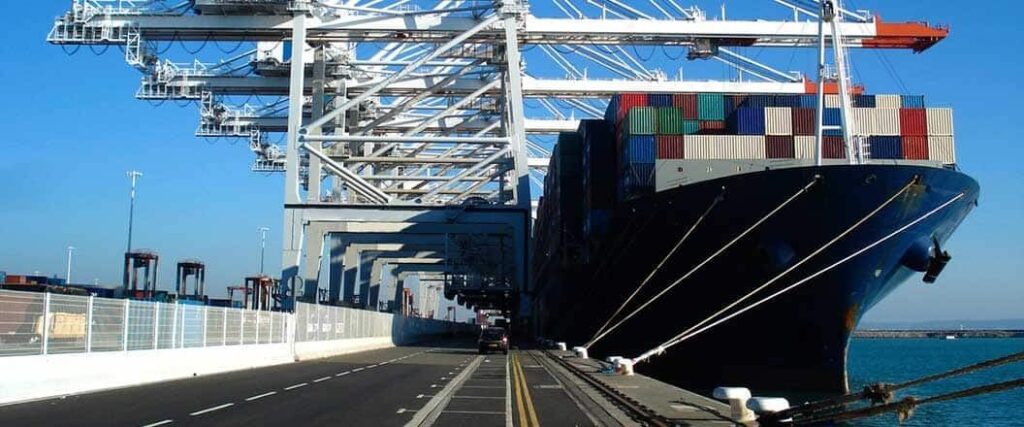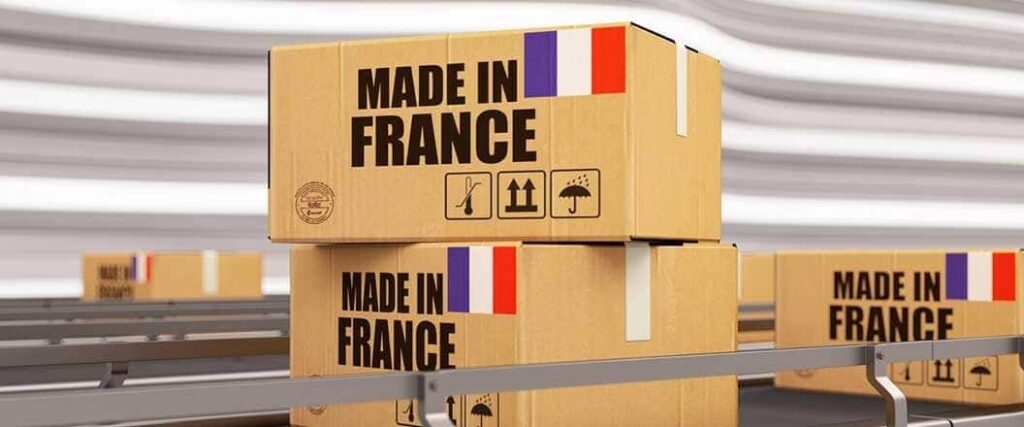
Import costs from France are a crucial aspect of doing business for U.S. importers. While French goods are highly sought after, accurately calculating expenses such as duties, tariffs, and shipping fees is no easy task. Mistakes in the calculation process can lead to costly fines and penalties from U.S. trade authorities.
The U.S. Customs and Border Protection (CBP) emphasizes the importance of understanding import costs when bringing goods from France. These costs include duties, tariffs, and shipping fees. It's vital for importers to accurately calculate these expenses to ensure smooth and compliant transactions.
If you’re looking for help understanding the many fees associated with importing goods from France, we’re here to help.

When determining the cost of importing a shipment of goods from France to the United States, there are two main types of fees to keep in mind.
Let’s explore these two categories in greater detail, starting with customs charges.
Yes, importers will be responsible for any import fees assessed by CBP on goods imported from France. On most consumer goods, you’ll incur duties of approximately five to seven percent of the shipment’s value.
In the United States, duties and tariffs are assigned using a system called the Harmonized Tariff Schedule (HTS). All commodities are assigned a 10-digit HTS code. This code is used by CBP to identify commodities and determine the rate of duty and tariff payment.
Depending on the goods in question, you might get lucky and not have to pay any duties at all. However, even in the event that a product has a 0% general duty rate per its HTS code, you will still be responsible for the 10% tariff being applied to all goods from the EU as of April 9, 2025.
This tariff is based on ad valorem and covers any and all goods from France that are not otherwise subject to separate tariff surcharges. While there is a narrow list of exemptions currently, we recommend confirming these with a customs broker if you feel your import qualifies.

There are no current free trade agreement between the U.S. and the European Union, of which France is a member. As such, you can expect to pay all applicable duties and import costs.
Import duties and tariffs are more than a source of revenue for governments. These customs duties and taxes serve a number of strategic purposes.
Some of the most common reasons a country imposes duties include:
The last two reasons can result in the U.S. government imposing specific customs costs. These are referred to as anti-dumping (AD) and countervailing (CVD) duties.
According to federalregister.gov, there are two active AD/CVD duties on goods from France as of the time of this writing. One is on the amino acid methionine, the other is on the chemical compound strontium chromate.
Keep in mind that these duties are imposed by the U.S. government based on international and domestic trade analysis. New AD/CVD orders may be issued at any time.

There are no duty-free rules from France that apply to importers bringing goods in for resale. Unless the product in question just happens to have a zero duty rate, you’ll have to pay customs charges on your shipment.
There are duty-free exemptions for merchandise intended for personal use. Usually the value limit is $800 USD. Several exceptions apply based on what products are being brought back, particularly on tobacco and alcohol.
For importers bringing in goods from France, there are two options for shipping: ocean freight and air freight. Of the two, ocean freight is far more affordable, but obviously slower. Air freight is more costly, but cargo can arrive within one to three days, compared to weeks via ocean.
Transportation costs fluctuate based on a number of factors. If you need a quote for a large shipment of goods from France, we suggest you give us a call at (855) 912-0406. USA Customs Clearance is powered by R&L Global Logistics, and we offer shipping services in all aspects of logistics, from international freight to final mile delivery.
Since France is part of the EU, The EU-US Trade and Technology Council (TTC) has great influence over the US/France trade relationship.
Established to foster closer ties and address shared challenges, the TTC oversees the following initiatives.
Through these actions and more, the TTC works to create an environment where trade between the EU and the US is efficient, fair, and mutually beneficial.

You might assume that France’s most popular exports to the USA would be commodities like wine and designer clothing. These goods actually play second fiddle to specific types of heavy machinery and medicines.
When you’re buying goods from France for resale in the states, knowing what the largest French exports are can help you tailor your business plan with a strategic mindset.
Whether you’re new to importing from France for the first time or a seasoned importer, it’s worth reviewing major French exports from time to time. Doing so provides insights into domestic availability, customer demands, and buying habits.
In this table, we’ve listed some top imports from France to the USA for July 2023.
| Commodity | Value in USD |
| Gas Turbines | $355M |
| Planes, Aircraft, and Spacecraft | $268M |
| Hard Liquor | $221M |
| Paintings | $190M |
Source: oec.world
Historically, France has also exported the following items to the U.S. in large quantities.
From machinery to Malbecs, France has much to offer U.S. importers. However, before bringing these products into the states, importers need to know if any tariffs are in place and how to calculate duties on goods from France.

Earlier, we laid out the existing AD/CVD order on some very specific goods from France. While these fees are referred to as duties, they function almost like a tariff in practice.
The main difference between a duty and a tariff can be explained as follows.
As of this writing, there is a tariff on steel and aluminum from the EU (and France by extension) of 50% ad valorem authorized by Section 232 of the Trade Expansion Act. The EU is also subject to a 15% tariff, which means any goods you import from France will be subject to the same rate.
The good news here is that if you are importing steel and aluminum from France, only the Section 232 tariff should be assesed and not be compounded with the reciprocal tariff.
If you’re not importing steel or aluminum, reciprocal rates will apply. At the moment, that is 20% but may change. For this reason, it’s wise to check the CBP website on occasion to make sure the goods you import aren't facing additional surcharges.
The process of calculating import tax from France isn't as cut and dry as you might assume. For those attempting to make the calculation themselves, following these steps will give you the best chance at an accurate calculation.
Keep in mind that HTS codes can become confusing quickly. This is largely due to the very minor differences between similar commodities.
Given how quickly fees can add up, importers often look for ways to reduce import costs and increase profits. There are some strategies that can assist with this endeavor.

Importers who want to reduce their import duty from France to U.S. should keep a few things in mind.
What does this mean for minimizing import fees? It means the focus should be on avoiding fines rather than reducing duties. Mistakes on an importer’s customs declaration can end up costing thousands of dollars.
The best way to avoid these fines is to partner with a CBP-licensed customs broker. A broker’s expertise will go a long way toward finding the correct custom clearance charges for import shipments from France.
While importing is a lucrative venture, the cost of doing business isn’t always completely clear. Between duties, tariffs, and the potential for fines, working with a customs clearance agency can save you plenty of money and stress in the long run.
The licensed brokers at USA Customs Clearance have over 100 years of combined experience helping importers bring goods into the U.S. We bring this experience to bear with our wide range of services, including:
Call us today at (855) 912-0406 or contact our team online. No matter what you’re importing or where you’re importing from, we take the guesswork and uncertainty out of this often confusing process.
 Copy URL to Clipboard
Copy URL to Clipboard
Add your first comment to this post